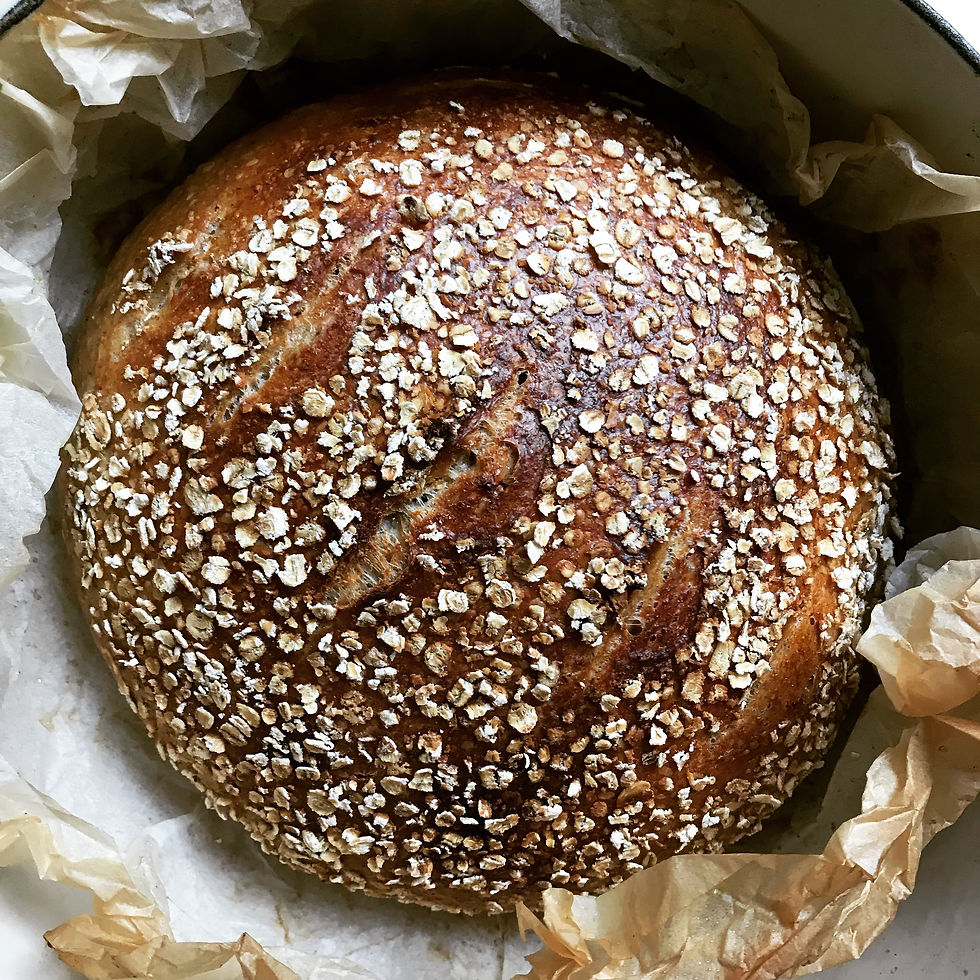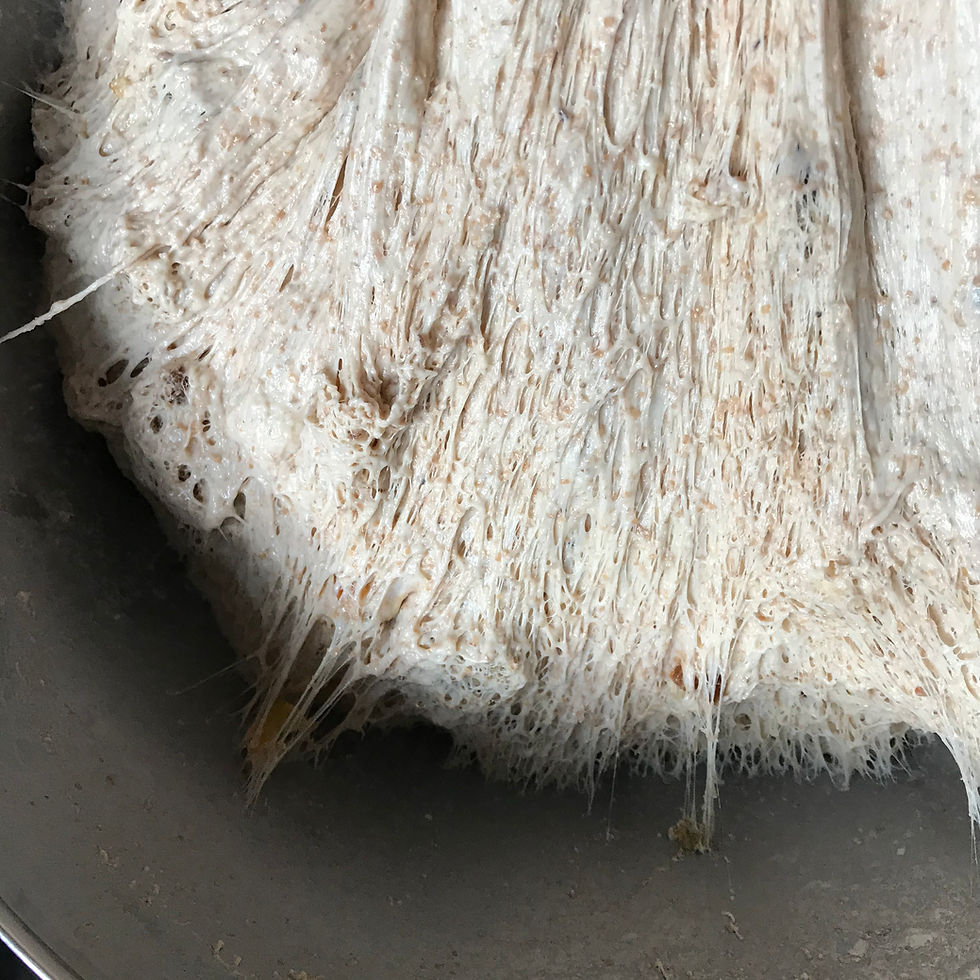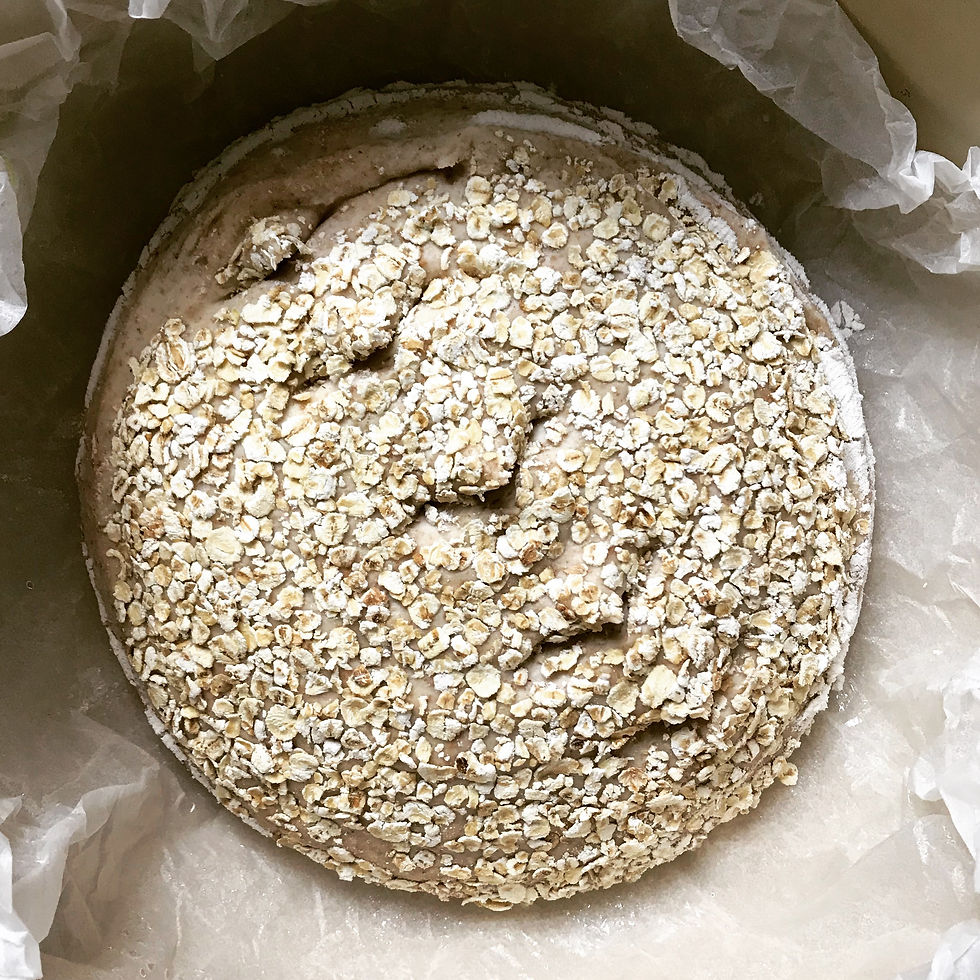Porridge bread recipe from Tivoli Road Bakery
- Kate
- Nov 6, 2018
- 3 min read

Bread has always been my first love- after I left publishing and moved to San Francisco, my diploma was in breads; specialising in sourdough. There is an alchemy to bread making which I still find magical (and frustrating on occasion) and is beyond the control of my recipes or scales. Weather, environment, the baker even, all affect the process and finished product, but the skill is learning to adapt to those variables and don't beat yourself up when it goes terribly wrong!
This recipe is one of my favourite go to comfort breads. It invariably always works out and tastes amazing to boot. I use something called a dutch oven for baking sourdough at home, and this is what will get you to that crunchy, chewy crust so indicative of sourdough. I add however, this is a recipe for confident bakers who already have their starter bubbly and active.
Michael and Pippa James, who run Tivoli Road Bakery in Melbourne subscribe to the philosophy that local, natural ingredients are always best, a philosophy I also apply to my work, andI would recommend their book as a great read as well as filled with lots of lovely recipes. Here in the meantime is their recipe with a few tweaks:
Butter toasted porridge loaf. Makes one loaf.
Porridge Ingredients:
10g unsalted butter
40g rolled oats
80g full fat milk
pinch of salt to taste
Starter build:
50g starter (mine is 50:50 rye:wholegrain)
25g strong white flour
25g whole wheat flour
50g water
Dough:
90g starter
270g strong white flour
60g whole wheat flour
260g water
8g sea salt
To make the porridge:
Melt the butter in a small saucepan until it starts to become brown and smell nutty. Add the oats and mix to coat them, stirring until lightly toasted.
Add the milk and salt and cook slowly until a thick porridge is achieved.
Allow the porridge to cool completely before using. I tend to make mine in a larger batch and store in the freezer or fridge until needed.
To make the bread:
Approx 4-6 hours before you make your bread dough, combine the starter flour and water for the starter build, mixing well to make a smooth paste. You will use 90g of this for your bread, and the rest will go towards maintaining your starter.
Approx 30 minutes before you plan to make the dough, mix the flours and water into a bowl until completely combined and then cover with cling film or a shower cap and set aside.
Once the starter mix is bubbly and smelling sour, add it to the above flour and water mix, sprinkle over the salt and finish bringing the dough together. Cover again and set aside for 30 minutes.
After 30 minutes, add the cooled porridge and do your first set of turns and folds to work the dough and ensure the porridge is evenly distributed.

Complete 3 more sets of folds, resting and covering the dough each time for 30-45 minutes. After the last set of turns and folds, cover and leave for 2-3 hours at room temperature. This is called a bulk prove.
After your bulk prove, shape the dough into a round and leave it to rest whilst you prepare the oat covering. Place rolled oats in a wide shallow bowl and spray your shaped dough with some water or run a damp cloth gently over the surface, then roll the dough into the oat filled bowl to cover the loaf.
Place the loaf seam side upwards (oat side down) into a proving basket and cover once again to leave it for a few hours to rise. You can also leave it overnight in the fridge if that works better for your schedule.
To bake:
Preheat the oven to its maximum temperature (mine goes to 240C) and just before baking, score the surface of the dough with some scissors in a snipping motion. This helps let the steam out and also adds definition.
To make your dutch oven, find a cast iron casserole dish with a lid. Clay pots can also work. Place the dish, lid on, into the oven for at least 30 minutes at its full temperature. Once the dough is ready, set the kettle to boil and tip the loaf out onto a sheet of baking paper sprinkled with semolina.
Carefully transfer the loaf to the hot dutch oven and slowly pour approx 30ml of water into the pan around the sides of the bread. Place lid on immediately and put into the oven to bake.
Bake the bread with the lid on, only removing it for the final few minutes to get a golden colour on the crust.














